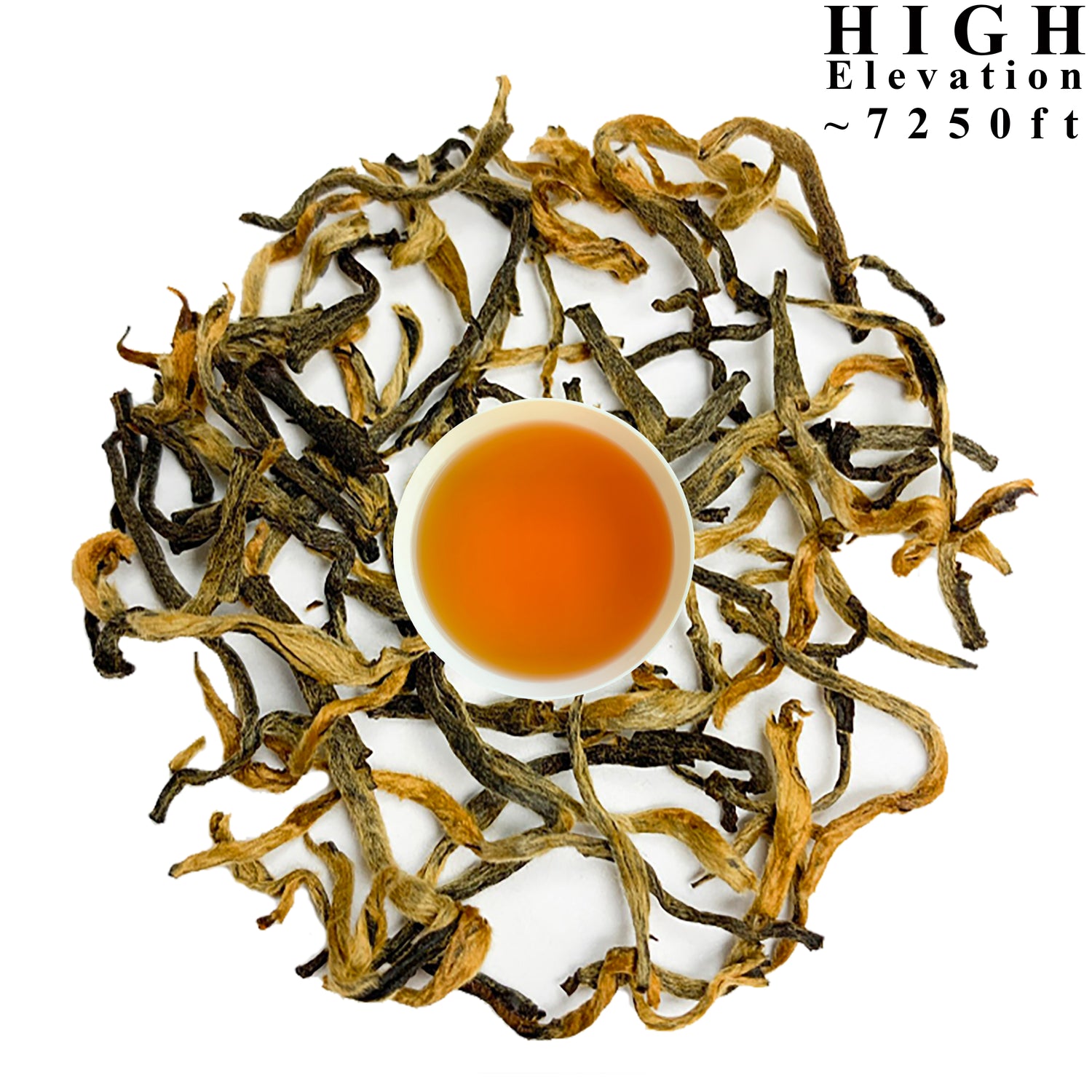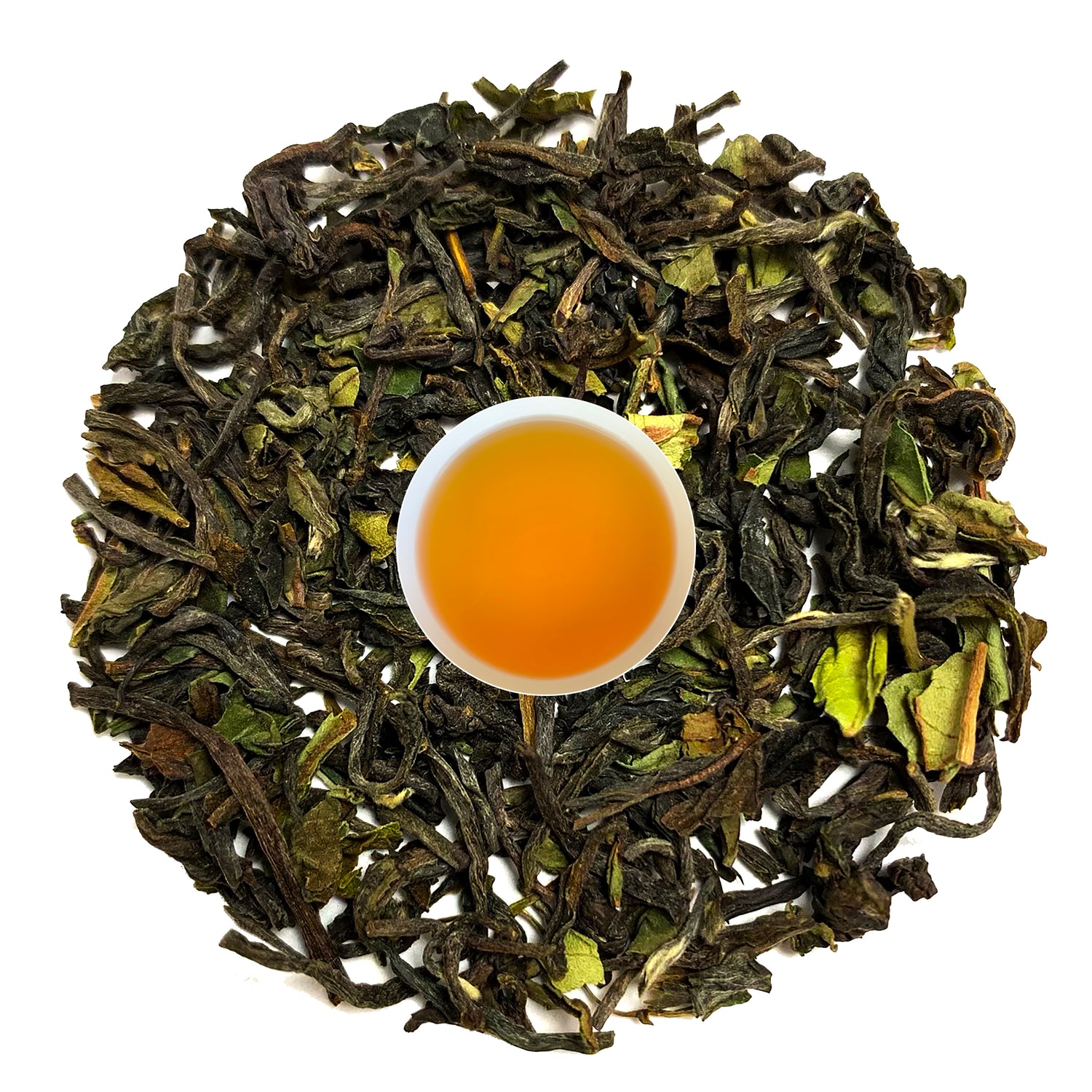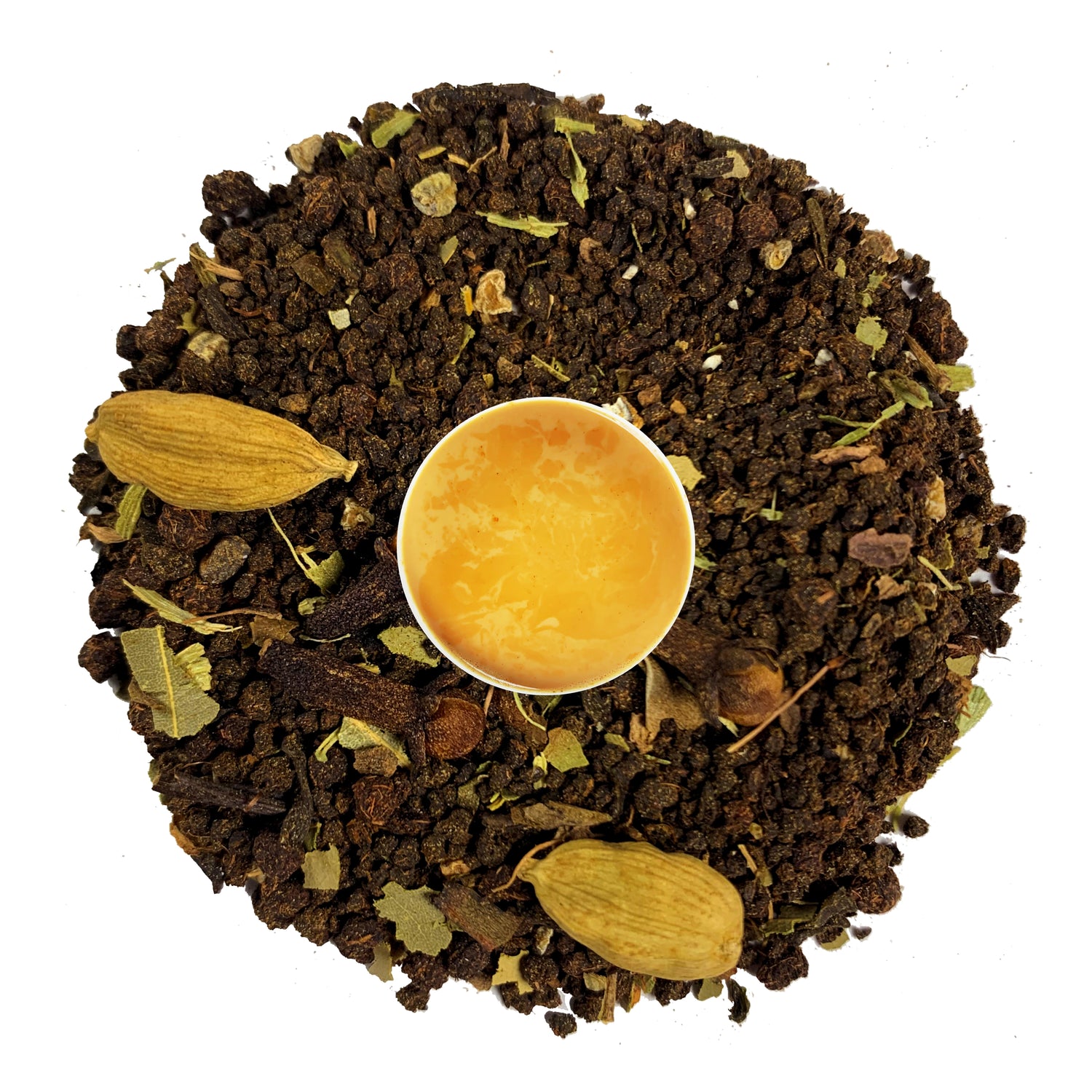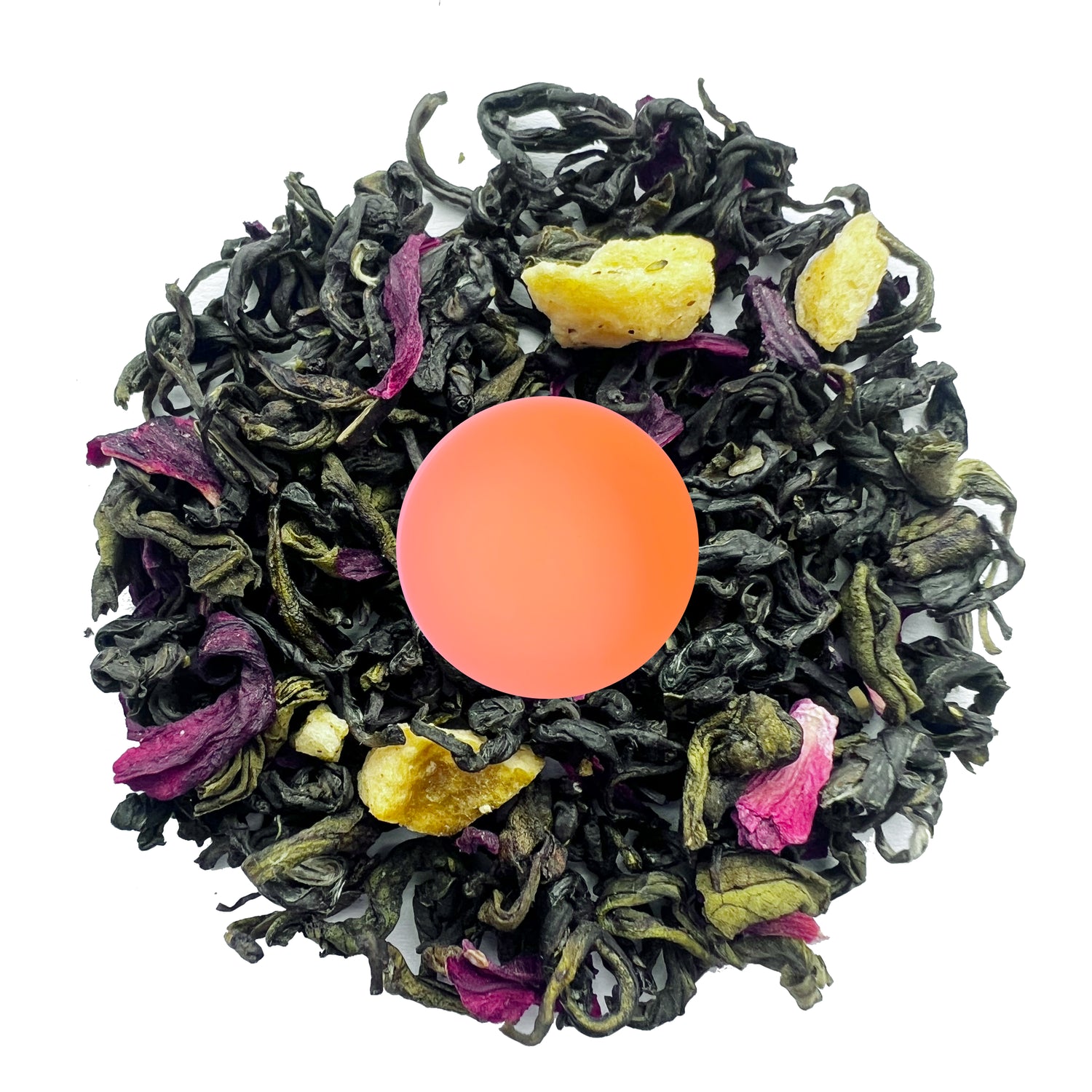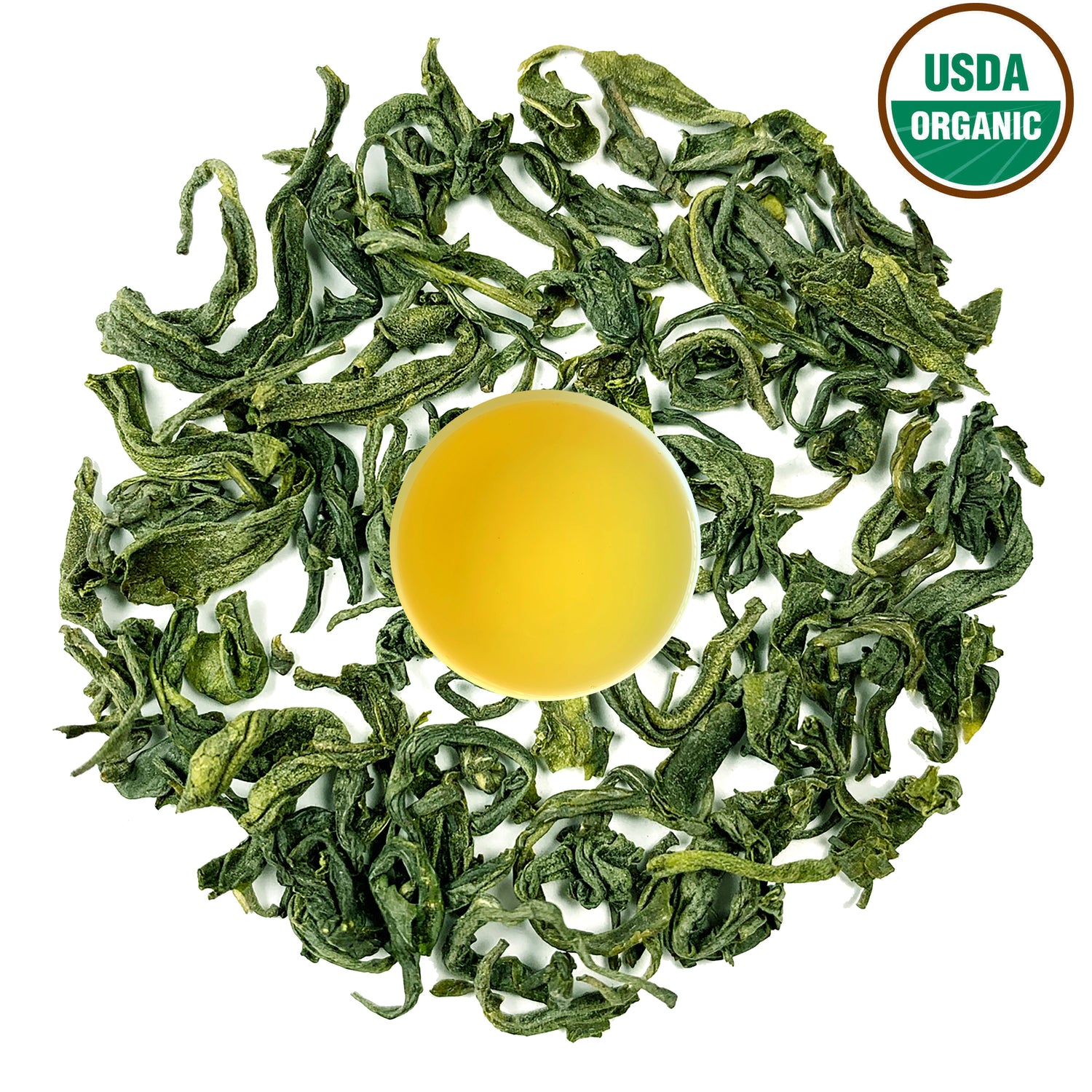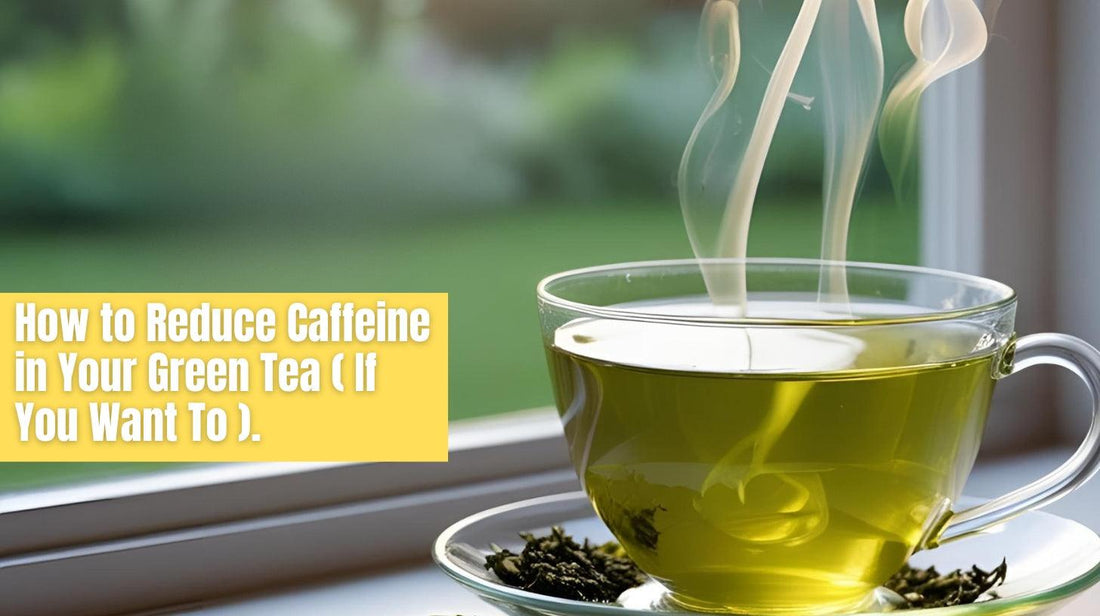
How to Reduce Caffeine in Your Green Tea (If You Want To)
Green Tea’s Caffeine Dilemma
Green tea is a health hero for many reasons—it's rich in antioxidants, supports brain function, and may even help burn fat. But here’s the catch: it still contains caffeine.
Now, compared to coffee, green tea usually has less caffeine. But if you're especially sensitive or trying to limit your intake for health reasons (like anxiety, insomnia, or pregnancy), that caffeine content might still be too much.
So, how much caffeine is in green tea? And is there a way to still enjoy its benefits—without the buzz?
Let’s dive into how you can enjoy green tea while minimizing its caffeine content.
1. How Much Caffeine Is in Green Tea?
Before we learn how to reduce it, let's understand what we're working with.
A. Green Tea Caffeine Content Overview
On average:
- One cup (8 oz) of green tea contains 25–35 mg of caffeine
-
Coffee? Roughly 95–150 mg per cup
But not all green teas are created equal.
Factors That Affect Caffeine Levels:
- Tea variety: Matcha has more caffeine than loose-leaf or bagged green tea
- Processing: Younger tea leaves (like in matcha or gyokuro) have more caffeine
- Brewing time & temperature: Longer steeping and hotter water release more caffeine
-
Serving size: Obvious, but a bigger cup = more caffeine
2. How to Naturally Reduce Caffeine in Green Tea
Here’s the part you came for. These science-backed and simple techniques can help you lower the caffeine in your green tea.
A. Shorten Your Steeping Time
The longer you steep green tea, the more caffeine it releases. To reduce caffeine:
- Steep for 30 seconds to 1 minute
-
Avoid over-steeping, especially in hot water
This alone can reduce caffeine by up to 50%.
B. Use Cooler Water
Caffeine is more soluble in hot water, so try using water between 150–175°F (65–80°C).
Pro tip: Let boiling water cool for 5 minutes before steeping your tea.
C. Go with the Second Steep
Here’s a trick from traditional tea drinkers:
- Steep your green tea once for 20 seconds
- Discard that infusion (it releases most of the caffeine)
-
Then steep again for your actual drink
This "second steep" method reduces caffeine significantly while still retaining flavor and antioxidants.
D. Choose Low-Caffeine Green Teas
Not all green teas are naturally high in caffeine. Some lower-caffeine options include:
- Shaded teas like Hojicha
-
Nepali loose-leaf green teas (often sun-dried and minimally processed)
Recommended: Mt. Pumori Best Green Tea (Certified Organic) – a mellow, low-caffeine Nepali tea perfect for sensitive drinkers.
E. Blend with Caffeine-Free Herbs
Want to still enjoy the flavor of green tea? Blend it with herbs like:
- Mint (also helps with digestion!)
- Chamomile (great for sleep)
-
Tulsi (Holy Basil, naturally calming)
Try Tulsi Chamomile Tranquility Herbal Tea on its own, or add a teaspoon to your green tea for a soothing, low-caffeine blend.
3. Green Tea vs Coffee: How Do They Really Compare?
Wondering if cutting down on green tea caffeine means missing out? Not really.
Let’s break it down:
|
Feature |
Green Tea |
Coffee |
|
Caffeine |
25–35 mg/cup |
95–150 mg/cup |
|
Antioxidants |
High in catechins |
High in chlorogenic acid |
|
L-theanine (relaxing compound) |
Yes |
No |
|
Jitter effect |
Rare |
Common |
|
Crash later? |
Less likely |
More likely |
4. Should You Avoid Green Tea for Caffeine Reasons?
Not necessarily! Even if you’re caffeine-sensitive, you don’t have to cut out green tea entirely. Here’s why:
- It contains L-theanine, an amino acid that promotes relaxation and balances caffeine’s effects.
- Many people find green tea provides calm alertness, unlike the jittery high from coffee.
-
By choosing the right green tea and brewing method, you can manage your caffeine intake easily.
5. Danfe Tea’s Low-Caffeine Green Tea Picks
Looking for a high-quality green tea that’s flavorful but easy on the caffeine?
Here are a few great options:
🌿 Mt. Pumori Best Green Tea
Certified organic and sourced from the Himalayas, this tea is smooth, clean, and lower in caffeine thanks to natural sun-drying.
🌿 Nepal Jasmine Green Tea
Floral and calming, jasmine naturally has relaxing properties that help counteract caffeine sensitivity.
🌿 [Green Tea + Tulsi Custom Blend]
Blend Danfe’s 29° Nepal Green Tea Leaves with 05° Tulsi Tea for an energizing yet grounding cup.
Trying to reduce caffeine but still love green tea? You’re not alone. The good news is—you don’t have to quit. You just need to brew smarter.
☕ Explore Danfe Tea’s low-caffeine green teas here and sip with confidence.
FAQs: Caffeine in Green Tea
Q: Does green tea have as much caffeine as coffee?
A: No—green tea usually has 3x less caffeine than coffee.
Q: Can I drink green tea before bed?
A: It depends. If you're sensitive to caffeine, go for a decaf or steep for less time, or switch to herbal teas.
Q: Does cold brewing green tea reduce caffeine?
A: Yes! Cold-brewed green tea releases less caffeine and is smoother and gentler on the stomach.
Q: Are green tea bags stronger than loose-leaf tea in caffeine?
A: Often yes—bagged teas can contain smaller leaf particles (dust or fannings) which release caffeine faster.
Q: What’s the best green tea for low caffeine?
A: Sun-dried or minimally processed teas like Mt. Pumori Best Green Tea from Danfe Tea are excellent options.
Tags
green tea caffeine, green tea vs coffee, caffeine in green tea, low caffeine green tea, how much caffeine in green tea, green tea side effects, green tea without caffeine, Danfe Tea

